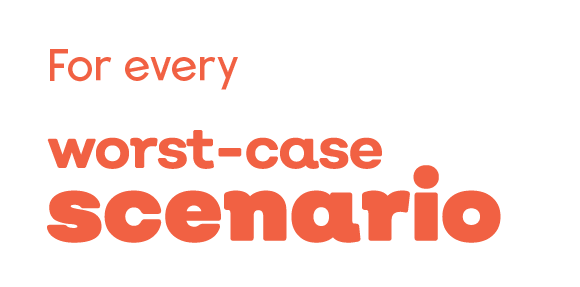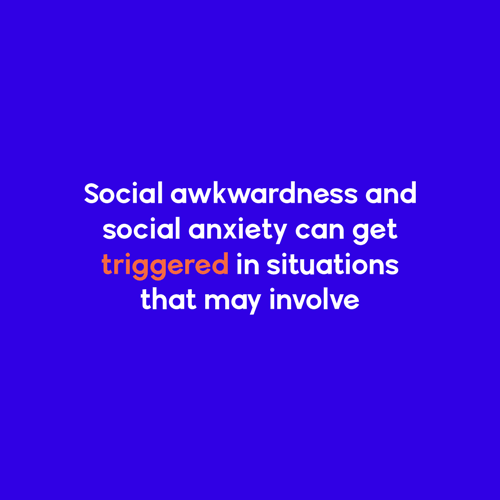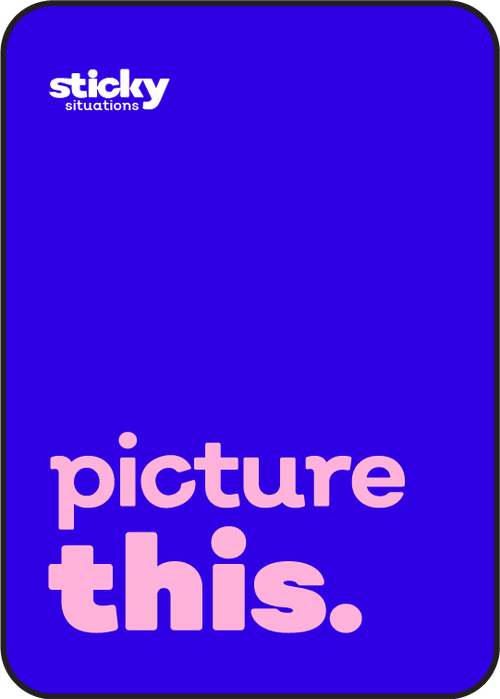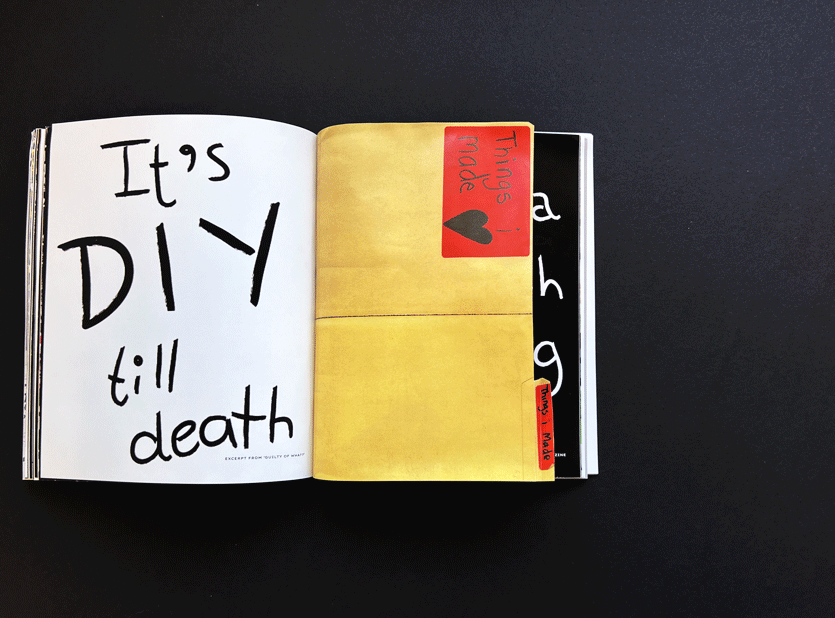
Sticky Situations
the social awkwardness survival game
Social awkwardness and social anxiety can cause you to feel uncomfortable and out of place in social situations - but here's the thing, some social situations are pretty much...unavoidable, and we also WANT to get better at navigating a social situation with ease and comfort.
Sticky situations is a game designed BY the socially awkward (me!), FOR the socially awkward. It isn't a cure, but I promise a lot of good conversations, and a LOT of fun.
The challenge
game design/ identity design
Skills Used
Winter 2024
Completed
The Sticky Situations process
or, here's all the worst-case scenarios I had to survive while (anxiously) creating this game:
Social awkwardness and social anxiety are vastly underrated on the spectrum on mental health.
My research started from - well, me. I noted down how I reacted in sticky social situations, and noticed which scenarios were likely to trigger my own response. I interviewed friends and family, and then began to cast a wider net.
The reddit forum r/SocialAnxiety proved to be a super helpful resource. I began to collect stories of people describing their own experiences and what helped them (or what didn't).
Early on, it became clear to me that while many people's stories carried an air of hopelessness about them, there was also a determination to keep trying. People were using the forum to ask others what helped, and sharing their own success stories.
I realized that people on the spectrum of social anxiety truly do want to get better at navigating a social situation with ease and comfort.
One particular conversation with my (extremely socially anxious friend) stuck with me. On being forced to wait for me at a restaurant till I arrived (sorry, Devika), she began to text me frantically, asking me to get there as quick as I can. She had ordered drinks for two people, and she began to wonder aloud if the waiters and waitresses at the cafe were judging her for ordering multiple drinks while sitting alone. What if they thought she didn't have any friends? What if they thought she was an alcoholic?
That's when it truly sunk in for me that while our social awkwardness might manifest in totally different ways, we all had one thing in common.
Whenever we found ourselves in a sticky social situation, we began to spiral.

Different people respond to their feelings of anxiety in different ways, but there's still a unifying factor there. Social anxiety isn't just about freezing up in a (sticky) social situation (which is how I personally experienced it). It's about the spiral.
People on the spectrum of social anxiety tend to jump to the worst-case scenario in just about any sticky social situation, and it's that spiral that manifests as a fear of the social situation itself.
From my research, I began to see that:

Operating based on my insights: People on the spectrum of social anxiety tend to jump to the worst-case scenario in just about any sticky social situation, but here's the thing. The TRUE worst-case scenario is never as bad as we usually think it's going to be, and there's always a way to make the best of it.
My task is to put my audience in a sticky social situation and then get them to ask themselves: what's the worst that could happen?
Essentially, I'd be creating an experience that lets people feel and get used to the discomfort of being in a social situation, while also giving them a range of tools to get through it.
And...since this is an experience that simulates discomfort...well, the least I could do as a designer was let people have some fun by making my experience a game.

While people on the spectrum of social anxiety (cough cough ME cough cough) tend to dream of the worst in just about any sticky social situation, here's the thing. The TRUE worst-case scenario is never as bad as we usually think it's going to be, and there's always a way to make the best of it.
Based on my research, I devised (the beginnings of) a solution.


The name of the game went through several variations (What's the worst that could happen / Worst-case scenario / Never gonna happen) before I finally settled on Sticky situations. On the right, you're looking at one of my first logo designs, doodled on a napkin at my university cafeteria. Although it was scrapped eventually, it captured what I wanted the game to be: FUN!

For my logo, I chose the font Nutmeg in a heavier weight, since it seemed to accurately capture the heaviness of being in a sticky social situation. I used Wavehaus as my primary font for the cards themselves, and took inspiration from the tilted axis of its lowercase 'e' to add some whimsy to my logo itself, a style that carries forward to the card backs.
I was heavily inspired by quotes from user stories I found on reddit that described social anxiety as drowning, and I drew my color palette from there: a deep blue to depict the feeling of drowning, and an orange-white combo that mimics lifebouys to depict reactions and eventual solutions.
(Design) decisions and some more (design) decisions



Based on my research from online forums and talking to my friends, family, and other acquaintances, I identified specific scenarios that triggered social anxiety spirals, and then categorized them into the following:
-
social situations involving professionals (giving presentations, talking to figures of authority, giving/taking an interview etc)
-
social situations involving friends and family (dealing with fallout, interacting at parties/meet-ups, catching up etc)
-
social situations involving strangers (joining a conversation, making small talk, breaking the ice etc)

-
During my research, I came across tons of interesting stories and experiences people had during which their social anxiety was triggered. I began to note similarities, find patterns, and then form groups of them. These groups would eventually form another vital aspect of the game, and determined my secondary color palette.
Categorizing some sticky social situations



Testing the game had me cycling through several versions, but here's what I noticed with the one that finally stuck:
-
It started a conversation about social anxiety, which is a largely underestimated and lesser-talked-about aspect of mental health. I want to invite discourse, but also keep it lighthearted and FUN.
-
It gets people on the spectrum of social anxiety used to the discomforts of being in a social situation. I had participants actively cringing and relating to the sticky social situations they were put in during the game.
-
It gets people WITHOUT social anxiety to put themselves in shoes they might not have considered before.
-
The game is FUN. Like, for real.

-
Welcome to sticky situations, the social awkwardness survival game! Your game box comes with 180 cards (that's 60 sticky situations to get out of), a lil' guide to understand the socially awkward, and a how-to-play instruction zine so you can make the most of all three modes of gameplay.
So picture yourself in a sticky social situation, ask yourself, "What's the worst that could happen?" and then try your hardest to make the best of it. Sticky situations isn't a cure to social anxiety, but it starts some great conversations, and it's super fun. I swear it (I'm not biased, I promise).
Are you ready to survive a sticky situation?

The Sticky Situations experience
or, here are the cards that just might change your game.

Make the best of 3 modes of gameplay
or, here's all the ways (yep, there are multiple) for you to play Sticky Situations!




Unboxing the game
here's all my cards, laid out on the table.


































